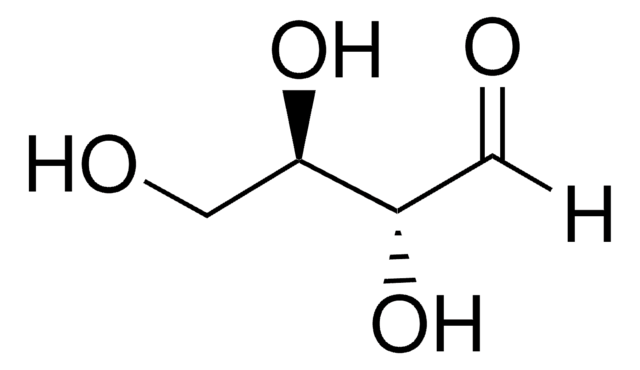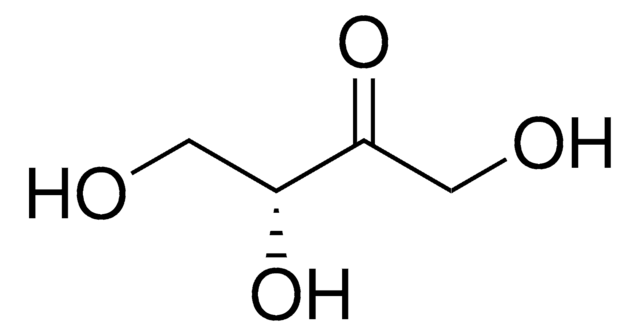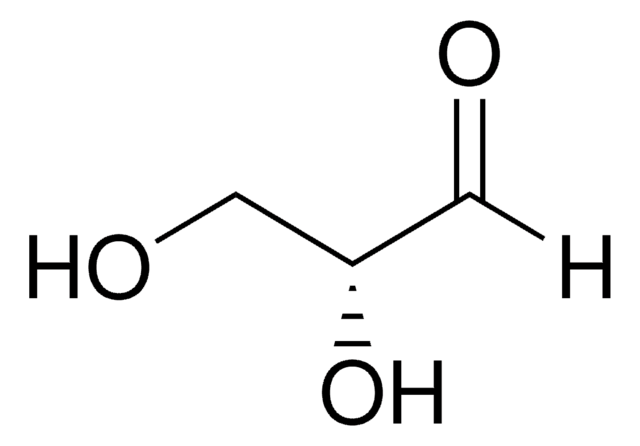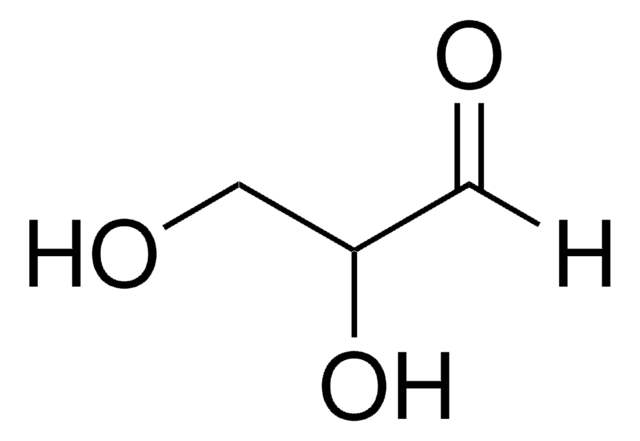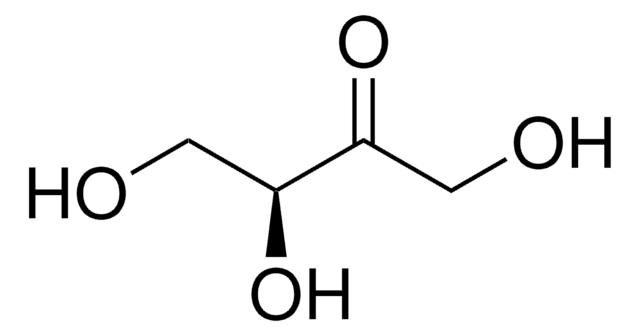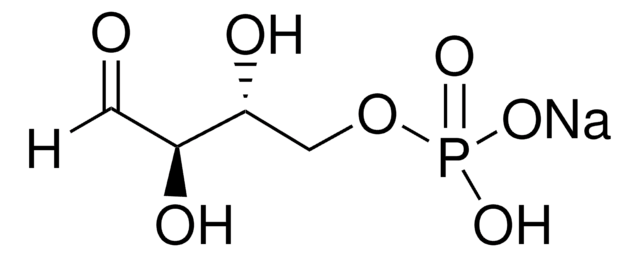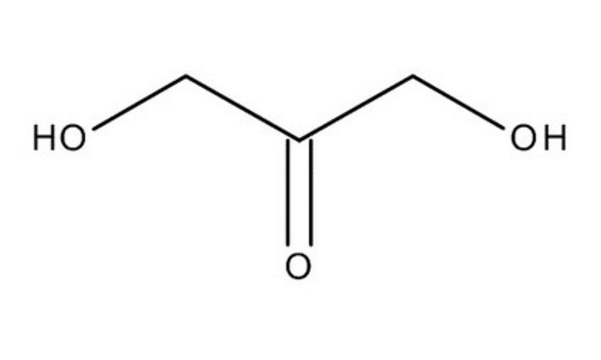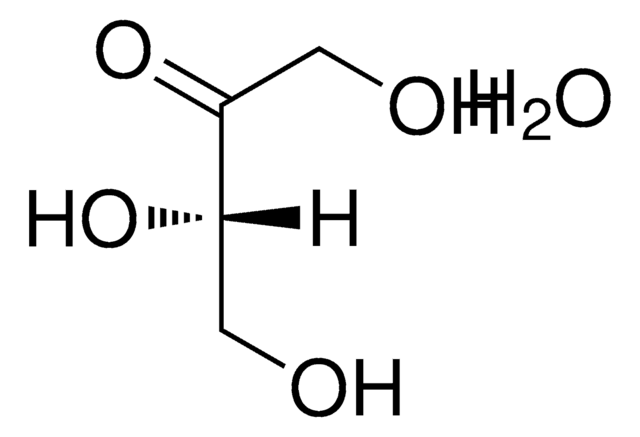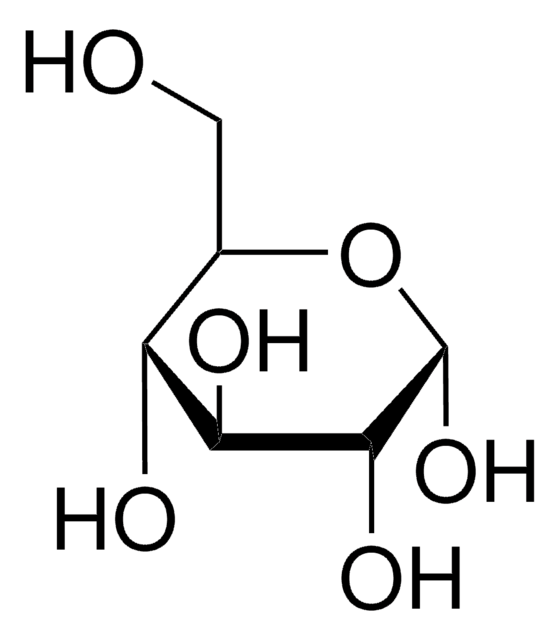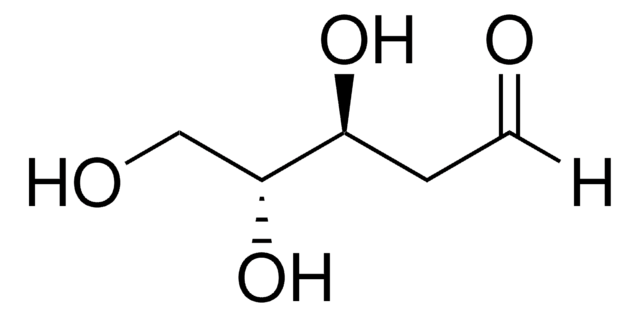All Photos(1)
About This Item
Empirical Formula (Hill Notation):
C4H8O4
CAS Number:
Molecular Weight:
120.10
Beilstein:
1721697
EC Number:
MDL number:
UNSPSC Code:
12352201
PubChem Substance ID:
NACRES:
NA.25
Recommended Products
form
syrup
concentration
~40%
color
light yellow
storage temp.
2-8°C
SMILES string
OC[C@H](O)[C@H](O)C=O
InChI
1S/C4H8O4/c5-1-3(7)4(8)2-6/h1,3-4,6-8H,2H2/t3-,4+/m1/s1
InChI key
YTBSYETUWUMLBZ-DMTCNVIQSA-N
Looking for similar products? Visit Product Comparison Guide
Application
L(+)-Erythrose, an aldotetrose rare sugar, may be used in glycation studies and as a reference compound in tetrose carbohydrate separation and quantitation analysis. It may be used to help identify and characterize erythrose reductase(s) and to study the mechanisms of mutarotation in monosugars. L-Erythrose may be used as a reference compound in sugar metabolism analysis.
Other Notes
To gain a comprehensive understanding of our extensive range of Monosaccharides for your research, we encourage you to visit our Carbohydrates Category page.
Storage Class Code
10 - Combustible liquids
WGK
WGK 3
Flash Point(F)
Not applicable
Flash Point(C)
Not applicable
Personal Protective Equipment
dust mask type N95 (US), Eyeshields, Gloves
Regulatory Information
监管及禁止进口产品
Choose from one of the most recent versions:
Certificates of Analysis (COA)
Lot/Batch Number
Don't see the Right Version?
If you require a particular version, you can look up a specific certificate by the Lot or Batch number.
Already Own This Product?
Find documentation for the products that you have recently purchased in the Document Library.
Katsushi Nishimura et al.
Journal of bioscience and bioengineering, 101(4), 303-308 (2006-05-24)
We have identified the enzyme responsible for erythritol utilization and its reaction product in the yeast Lipomyces starkeyi CBS 1807. The enzyme, a polyol dehydrogenase requiring NAD+ as a coenzyme, was induced by erythritol in this yeast. We confirmed that
Luis Miguel Azofra et al.
Carbohydrate research, 372, 1-8 (2013-03-19)
The acid catalysis of the mutarotation mechanism in the two aldotetroses, d-erythrose and d-threose, has been studied at B3LYP/6-311++G(d,p) computational level in gas phase and in solution employing the PCM-water model. The open-chain, the furanose and the connecting TS structures
Ludwika Tomaszewska et al.
Applied biochemistry and biotechnology, 172(6), 3069-3078 (2014-02-04)
The aim of this study was to examine the impact of divalent copper, iron, manganese, and zinc ions on the production of erythritol from glycerol by Yarrowia lipolytica and their effect on the activity of erythrose reductase. No inhibitory effect
Production of L-erythrose via L-erythrulose from erythritol using microbial and enzymatic reactions.
R M Mizanur et al.
Journal of bioscience and bioengineering, 92(3), 237-241 (2005-10-20)
A rare aldotetrose, L-erythrose, was produced from erythritol via a two-step reaction. In the first step, complete oxidation of erythritol to L-erythrulose was achieved by using Gluconobacter frateurii IFO 3254. Washed cell suspension of the strain grown on tryptic soy
Eun-Hee Park et al.
Journal of microbiology and biotechnology, 21(10), 1064-1068 (2011-10-28)
The osmotolerant yeast, Candida magnoliae, which was isolated from honeycomb, produces erythritol from sugars such as fructose, glucose, and sucrose. Erythrose reductase in C. magnoliae (CmER) reduces erythrose to erythritol with concomitant oxidation of NAD(P)H. Sequence analysis of the 5'-flanking
Our team of scientists has experience in all areas of research including Life Science, Material Science, Chemical Synthesis, Chromatography, Analytical and many others.
Contact Technical Service